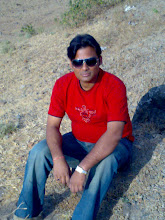
This is probably the most asked question posed to those in the Geographic Information Systems (GIS) field and is probably the hardest to answer in a succinct and clear manner. "A geographic information system (GIS) is a computer-based tool for mapping and analyzing things that exist and events that happen on earth. GIS technology integrates common database operations such as query and statistical analysis with the unique visualization and geographic analysis benefits offered by maps."
GIS IN BUSINESS
Many businesses are using GIS for target marketing, competitive analysis, demographic analysis, risk management, route planning, and expansion analysis.
HEALTH CARE
The health care industry is successfully using GIS for marketing and promotion, research and planning, facilities management, and finance.
GOVERNMENT
Local, State, and Federal governments use GIS for economic development, legislative reform, voter registration and administration, zoning and land use controls, and emergency route management, just to name a few uses.
LOGISTICS
Organizations with delivery vehicles can use GIS for routing and scheduling, facilities management, vehicle tracking and dispatch, and warehouse operations.
AGRICULTURE
GIS is being used in agricultural business for production analysis, precision farming, runoff and non-point source pollution control, regulatory compliance, and financial modeling.
EDUCATION
Higher education and K-12 have used GIS for administration, school district remapping and student assignment, research, teaching, and community services.
TELECOMMUNICATIONS
Telecommunications companies have implemented GIS for target marketing, wireless engineering, customer support, outside plant engineering, construction management, and communication network routing and operation.
GAS & ELECTRIC
Gas and Electric companies use GIS for marketing, customer service, transmission and distribution system management, power generation and load management, meter reading, billing and collection, finance, operations, and engineering planning and design.
PETROLEUM
GIS is in use by the Petroleum Industry for retail, distribution, facilities management, and exploration.
ENVIRONMENTAL MANAGEMENT
GIS is an integral part of environmental management today. GIS can be used for site remediation, natural resource management, waste management, water quality, groundwater modeling, and vegetation mapping.
PUBLIC SAFETY
GIS forms an integral part of the emergency response mechanisms in place in most large-scale E-911 installations. The GIS is used to assist in real-time emergency response, in addition to being used for planning the response to future man-made or natural disasters.
PIPELINE
Building a pipeline may require GIS for risk management, market analysis, route planning and construction, and operation and maintenance once the pipeline has been put into service.
Forestry
GIS has been emerging as a strong tool for many areas of forestry, from harvesting schedules to urban forestry.
Real Estate and GIS
Resources to finding out about the application of GIS in the real estate industry and market analysis.
Source :- http://www.dimensionicad.com




